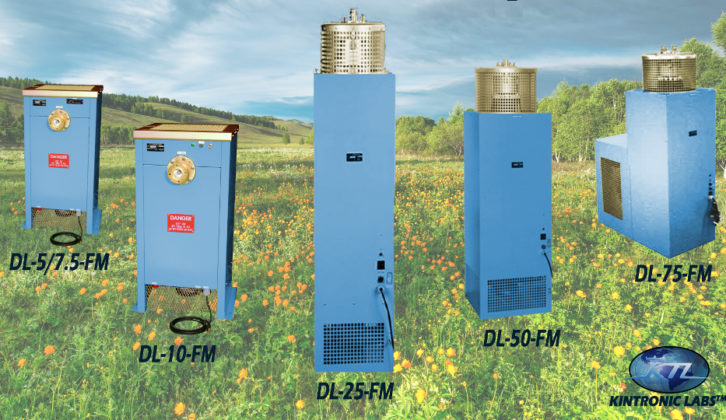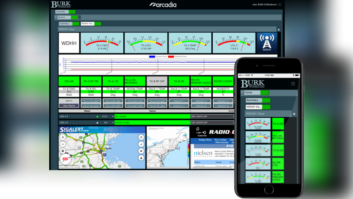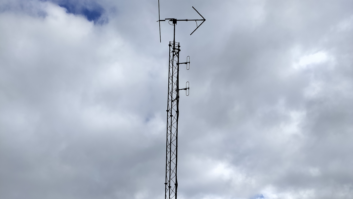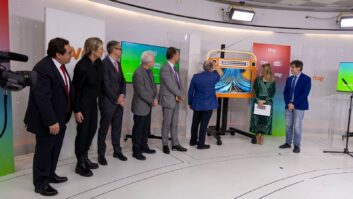The author is technical director for Radio Wrocław in Wrocław, Poland.
WROCŁAW, Poland — Regional public broadcaster Radio Wrocław has teamed up with Wrocław University of Science and Technology and Poland’s National Institute of Telecommunications (ITL) to establish a single frequency DAB+ network for small and local broadcasters in the city of Wrocław and vicinity.
The local DAB network, which was set up in December 2017, is comprised of three transmitters that work as a single frequency network and operate in the 11A T-DAB block in the city of Wrocław. The three transmitters are located respectively at Wrocław University of Science and Technology with a radiated power of 1.15 kW ERP; the ITL (0.85 kW ERP) and Radio Wrocław (1.17 kW ERP).
We calculated current SFN network coverage for mobile reception conditions (99 percent probability at 1.5 m AGL) using a digital terrain map for Poland (Figure 1a). SFN network gain and statistical field strength distribution analysis were carried out using k-LNM methodology.


ITL staff performed initial drive test measurements. The results are presented in Figure 1b. Based on analyses and drive test outcome, some points in the city appear to be susceptible to local signal dropout, which can cause gaps in coverage. We are thus are planning to increase the radiated power of each of the three transmitters to 2.5 kW ERP, which should significantly improve reception conditions, eliminating existing local reception problems. Of course, the coverage depends on the level of error protection used for the transmission. This will also be a subject of our research.
A VISUALIZATION AND NOTIFICATION SYSTEM
We are using the Grafana application for visualization and notification. The system offers many configuration-related functions and lets us create user panels for presenting the data stored in the inxluxDB database. For each SFN network element, we prepared a separate panel, thus allowing the local DAB administrator to carry out immediate monitoring of the system’s most vital parameters.
We have created the following panels for this project: Three panels for presenting the three modulators’ parameters; a panel for displaying the multiplexer parameters; a panel showing the system time parameters; and a composite panel outlining crucial system parameters.
Each panel consists of rows containing controls in the form of highlighted fields and graphs. It is possible to configure control with an alarm that is triggered once a specific parameter exceeds its predefined threshold. When the alarm goes off, an email is automatically sent to the system administrator.
[Read About How KRRiT Aims to Boost DAB+ in Poland]
Figure 2 shows a panel containing the operational parameters of a modulator located inside the Radio Wrocław building. This modulator monitors the following parameters: System uptime since the last startup; DC supply parameters (a status, battery charge, uptime since the last blackout); modulator processor load; modulator input stream throughput; power amplifier (PA) status (transmission/no transmission); PA mode (local, remote); PA temperature; PA input/output temperature; reflected power arriving at the PA output; supply voltage and current consumed by the PA and the pre-amplifier; as well as alarms (reflected power level, input signal/overdrive control, amplification, PA temperature, DC supply, pre-amplifier and PA status).
This monitoring set up allows for a prompt response in the case of problems during operation and maintenance. When modifications are introduced, the system’s low-level response can be quickly spotted.

DOCKER-BASED SOFTWARE PLATFORM
To facilitate the operational tasks of the entire transmission chain, we chose a solution based on Docker container technology. This system does not require any particular IT skills to install or run, and in general, consists of two fundamental elements: a multiplexer and a modulator/transmitter. The number of transmitters, of course, can vary depending on planned coverage area, whereas the multiplexer is common to all transmitters.
In order to initialize the multiplexer, a PC with Linux OS is needed (we use Debian 9 distribution for our local DAB project). One must first set up an optimal environment to run containers and then, by using prepared configuration files, the operator can run the entire software necessary for the multiplexer to start working. We opted for the Opendigitalradio software to handle transmission-related processes. However, in order for the multiplex software to be installed, some other software must also be installed. In Figure 3 the multiplexer software structure is presented, along with its dependencies and libraries.

As shown in the figure, four containers were created. One of them constitutes the core multiplexer process — LokDabMux — the main component of which is the odr-dabmux software. Another image — AudioEncoder — allows users to create input audio streams to be fed into the multiplexer. From this image, by running several containers, one can establish multiple radio stations that altogether form the DAB+ multiplex.
In the local DAB project the encoder inputs are audio streams delivered by the broadcasters. The main components of this image are odr-audioenc and odr-padenc. The former is responsible for processing audio streams while the latter for appending DLS text services and MOT graphics to the audio stream. Complementary to all these elements are the InfluxDB database and the above-described Grafana-based system for monitoring the transmission chain. System receivers obtain information from the multiplexer. Figure 4 shows the software structure necessary for running the system modulator/transmitter.

The main components here are the libraries for handling USRP cards (used as modulators in the system) and the odr-dabmod software, which collects data from the multiplexer and conveys it to the USRP card. Similarly, as with the multiplexer, all that is necessary here is a computer with Linux OS and the Docker environment, while the rest of the tasks are performed by installation files.
The Docker container approach as a basis for running a DAB+ system has proved to be crucial to streamlining the multiplexer and transmitter IT environments in our project. During the mission, we developed a series of necessary procedures for both running and monitoring DAB+ system operation. Thus, technical prerequisites and requirements that are often prohibitive for smaller broadcasters who wish to switch to digital broadcasts, have been considerably alleviated.















